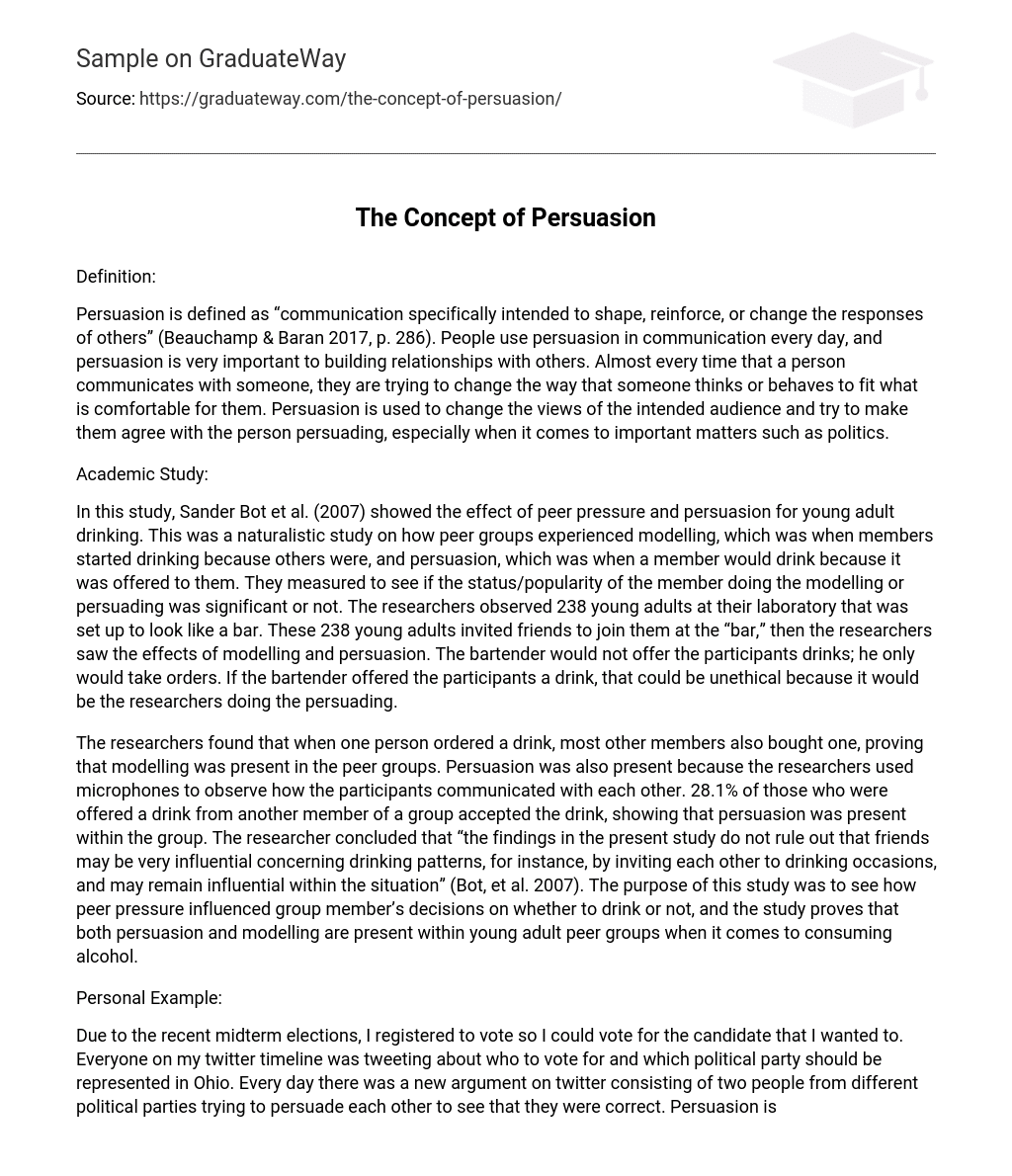Definition:
Persuasion is defined as “communication specifically intended to shape, reinforce, or change the responses of others” (Beauchamp & Baran 2017, p. 286). People use persuasion in communication every day, and persuasion is very important to building relationships with others. Almost every time that a person communicates with someone, they are trying to change the way that someone thinks or behaves to fit what is comfortable for them. Persuasion is used to change the views of the intended audience and try to make them agree with the person persuading, especially when it comes to important matters such as politics.
Academic Study:
In this study, Sander Bot et al. (2007) showed the effect of peer pressure and persuasion for young adult drinking. This was a naturalistic study on how peer groups experienced modelling, which was when members started drinking because others were, and persuasion, which was when a member would drink because it was offered to them. They measured to see if the status/popularity of the member doing the modelling or persuading was significant or not. The researchers observed 238 young adults at their laboratory that was set up to look like a bar. These 238 young adults invited friends to join them at the “bar,” then the researchers saw the effects of modelling and persuasion. The bartender would not offer the participants drinks; he only would take orders. If the bartender offered the participants a drink, that could be unethical because it would be the researchers doing the persuading.
The researchers found that when one person ordered a drink, most other members also bought one, proving that modelling was present in the peer groups. Persuasion was also present because the researchers used microphones to observe how the participants communicated with each other. 28.1% of those who were offered a drink from another member of a group accepted the drink, showing that persuasion was present within the group. The researcher concluded that “the findings in the present study do not rule out that friends may be very influential concerning drinking patterns, for instance, by inviting each other to drinking occasions, and may remain influential within the situation” (Bot, et al. 2007). The purpose of this study was to see how peer pressure influenced group member’s decisions on whether to drink or not, and the study proves that both persuasion and modelling are present within young adult peer groups when it comes to consuming alcohol.
Personal Example:
Due to the recent midterm elections, I registered to vote so I could vote for the candidate that I wanted to. Everyone on my twitter timeline was tweeting about who to vote for and which political party should be represented in Ohio. Every day there was a new argument on twitter consisting of two people from different political parties trying to persuade each other to see that they were correct. Persuasion is constantly being used in politics because the parties are always arguing against each other and trying to get more votes. The week leading up to the midterm election I was constantly receiving text messages from the democratic party campaign telling me to vote for their representative, and these constant texts were a form of persuasion to get me to vote for who they wanted to win.
References:
- Beauchamp, S. R., & Baran, S. J. (2017). Introduction to Human Communication Perception, Meaning, and Identity. Oxford.
- Bot, Sander M., et al. “Sociometric Status and Social Drinking: Observations of Modelling and Persuasion in Young Adult Peer Groups.” Journal of Abnormal Child Psychology, vol. 35, no. 6, 2007, pp. 929–941., doi:10.1007/s10802-007-9144-1.





